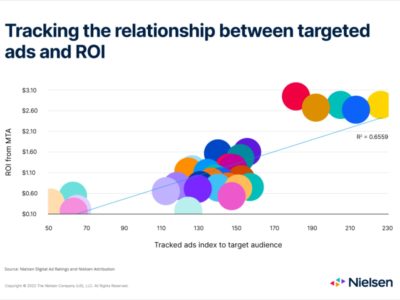
Pilots need real-time information to tell them how well their aircraft is performing and whether it’s on course to arrive on time or earlier, using airspeed indicators, altitude indicators, altimeters and more. Landing in the desired place is the ultimate goal. The goal of in-flight information, or optimizing their flight path, is to know and optimize the way they get there. Marketers, on the other hand, often don’t have the tools they need to understand in-flight performance and are forced to focus on the landing.
It is essential to use in-flight indicators in order to improve your campaign’s performance and increase ROI in an age of data-driven marketing. In-flight indicators of campaign performance are key. SME conducted an analysis recently to confirm that the best ad can be delivered to the right audiences to increase your ROI. This is proving that audience metrics are a key indicator of campaign success. Given that agencies and advertisers preach this belief for years, the validation follows a basic marketing rationale.
Better reach = better outcomes
Our analysis covered research on 15 brands as well as 82 campaigns. We found audience-based reach measures to be a strong indicator of ROI and effectiveness. This was achieved by aligning the in-flight reach metrics of Digital Ad Ratings (DAR), with SME Attribution’s outcome metrics.
There was a strong correlation (R=0.68) between the audience-based reach metrics of these campaigns and their sales results. Simply put, 68% of variances in results across 15 brands could have been explained by the performance a corresponding reachmetric.
The chart shows the example of the blinded advertiser. Each bubble shows data for one vendor over a single month for one campaign. The Tracked Ads Index (X-axis) is an indicator of how many ads were delivered to specific target audiences versus their population.
Here’s how to calculate the Tracked Ads Index:
- You can serve 4 percent of your ads to people who are 4% of the population. This is fair share.
- This audience would not be able to pay 2% for the ads, and 50 is not appropriate.
- Overserving ads make up 8%. The 200 index is the norm.
ROI can be measured on the Y axis. An advertiser saw positive results from various partners that reached its targeted audience. This is the particular example.
This graph shows three different performance categories:
- The group in the bottom left represents partners who poorly reached their target audience.
- The middle group represents those partners that were slightly more successful than others in reaching their target audience.
- Partner who were focused upon reaching their target audience represent the group located at the top of the page.

What did audience performance have to do with ROI? The cluster in the lower left (vendor/campaign/month data) represents an underdelivered audience, generating an average ROI of $0.25 for every $1 spend. Although the vast majority of activity occurs in the middle section of the chart (generating an average ROI for $1), it did tend to increase as the index increased. You can see the effect of targeting more people with ads, as the cluster to the right shows. This resulted in a $2.60 increase in ROI per dollar spent.
How you got here
What does all this translate to? Much as a pilot can use an altitude indicator to understand orientation with respect to the Earth’s horizon, marketers can use DAR metrics to indicate future outcomes performance. This example shows how these metrics could be used to help marketers fine-tune audiences. An advertiser in this case previously targeted a number of different audiences, and a greater focus was placed on the younger age groups. The analysis revealed that this brand’s ROI is higher if it focuses on its target audience and monitors and optimizes performance during flight.
It isn’t enough to simply know that you arrived at your destination, or that your campaign was successful. Marketers must know the process and the in-flight indicators that helped them get there. This is essential if they want to be able to replicate and improve the results in the future.
The post How audience-based reach metrics in-flight can boost ROI – Nielsen appeared first on Social Media Explorer.
* This article was originally published here
(” Learn How to Make Money With Affiliate Marketing – http://bit.ly/make_online_now “)
Comments are closed.